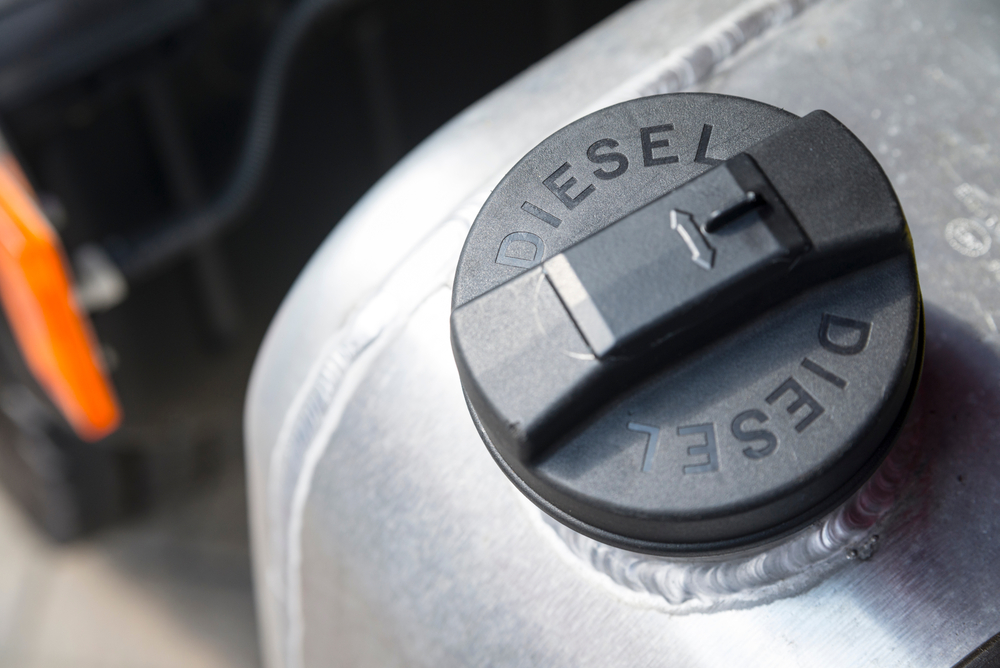The price of diesel fuels affects all aspects of farm operations. As prices surge with no clear sign of stopping, farmers are concerned for the future.

Fueling up a tractor is getting a lot more expensive. “Our last fill, it was about $10,000 or $11,000 just to top them off, where normally it would be $3,000 or $4,000,” says third-generation farmer Bradley McKay. “A couple years ago, we were paying $2 per gallon for fuel, and now it’s over $5.”
In Page, North Dakota, McKay grows midwest staples of corn and soybeans. For him, the cost of fuel is about so much more than just topping off the tanks for his tractors and machinery. It has ripple effects to every corner of his farm—and even the farm-adjacent businesses. “When I call my chemical retailer, I might need a jug or two of chemicals to finish what I’m doing. And a couple of jugs of chemicals are not going to cover their fuel costs [to get it to me]. So, they’re asking ‘is there something else you might need?’ to make it worth their time,” says McKay.
The farmer has also changed his usual routines, hauling his corn to a market that pays less for the crop but is a closer drive. “Usually, we go to an ethanol plant 50 miles away. Right now, I’m hauling to a [grain] elevator that’s closer, that’s 15 miles away, but I’m taking a little bit less for my corn,” he says. “But when I figure it out, I’m still better off than burning $5.50 diesel.”
Across the country, the average cost for diesel fuel, on which most farm equipment runs, is about $5.70 per gallon. On the coasts, it’s averaging around $6 a gallon, with prices a little lower through the midwest. That means that farmers like McKay have had to adjust aspects of their business to compensate. A late spring in North Dakota means that McKay finished up planting in mid-June and held back on tilling the fields as much as he might otherwise, conscious of the $1,500 price tag to fill up one tractor.
While farmers are shifting their routines, so are consumers. The average cost of gasoline across the US is around $5 per gallon, and even more in certain states such as California, which is already affecting how much people spend on other goods. A study from the National Bureau of Economic Research found that shoppers typically have categories set up for how they spend their money: gas, groceries, household expenses and the like. When gas prices rise, consumers tend to overreact by downgrading to a lower grade of gasoline, halting unnecessary travel and putting off purchases in other categories.
On June 22, President Joe Biden called for a suspension of the federal gas tax, collected by the federal government to pay for projects such as highways and transportation. Suspending the tax would save Americans 18 cents per gallon on gasoline and 24 cents per gallon on diesel. Biden proposed suspending the tax for three months, what the White House is calling a “gas tax holiday.” The proposal is now in front of Congress, but experts don’t expect it to gain much traction.
How did prices get this high in the first place? Russia’s invasion of Ukraine in February has a lot to do with it. Russia is a major source of fertilizer and oil, and with Biden’s ban on Russian imports of oil to the US, prices have surged.
“It’s definitely something everybody is talking about,” says McKay. “A lot of guys are nervous, because we’re not seeing anything really change. Everybody’s talking about how [prices] possibly could go higher. So, there’s not a lot of optimism.” Instead, he says, talk around the local co-op lately is more about whether to buy futures contracts. Some farmers may have the option to purchase futures contracts on fuel, locking in the current price over the next six months or year. That could be a smart move if prices continue to rise, but it’s hard to justify with prices so high already, says McKay. “It’s just a lot of unknowns.”
One economist says summer might actually be the best time to top up fuel orders. In a release, Gregg Ibendahl of Kansas State University highlighted that fuel costs show some seasonality in their pricing, typically dropping in the winter and summer. Although those dips may be less pronounced this year, Ibendahl still recommends buying now. “We see more of a seasonal demand for diesel fuel in the spring and fall,” says Ibendahl. “Prices are probably 15 to 20 cents higher in October and November, but the rest of the year it is probably just a little bit below average.” The expert does note that prices are especially variable this year, due to current world events.
McKay, who grows corn and soybeans, says he’s doing OK for now. With less corn coming out of Ukraine, the prices for the crop have also risen, so he’s able to sell for a decent rate. But he knows that won’t last forever. “At the moment, we’re selling $6 corn and $14 soybeans, so we can live with that fuel cost because prices are up,” says McKay. “But we all know that when prices go down, fuel isn’t necessarily going to follow. If we go back to $3 corn and we’re spending $5 on diesel, that really doesn’t work.”
Soar powered tractors could be the answer. More efforts are desired to make farming economical.
All Biden’s fault. Price of fuel twice as high as it was the day before he was inaugurated. Can’t wait for the midterms and for 2024.